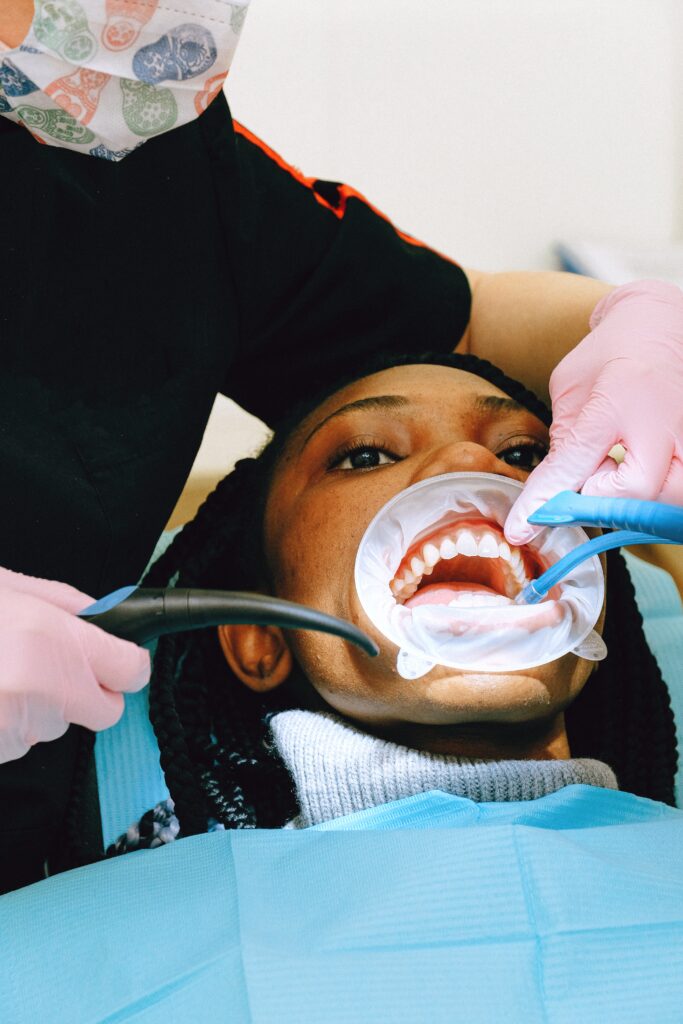Why Are My Gums Brown? What Causes Changes in Gum Color
Your oral health is a reflection of your overall well-being, and your gums play a crucial role in maintaining a healthy mouth. The natural color of gums varies from person to person, ranging from pale pink to light brown gums. However, if you’ve noticed that your gums have turned brown or even black, it can be concerning. Discoloration of the gums, especially when it’s a sudden change, can be an indicator of an underlying issue. In this blog, we’ll explore the reasons behind gum discoloration, specifically focusing on why your gums may appear brown gums or black gums.
Understanding Normal Gum Color
Before delving into the reasons behind gum discoloration, it’s essential to understand what constitutes normal gum color. Typically, healthy gums are a shade of pink, with variations depending on factors like ethnicity, age, and individual genetics. Here are some general guidelines:
- Pale Pink: This is the most common and healthy gum color. It signifies good blood circulation and healthy oral hygiene.
- Darker Pink or Brownish Pink: Some individuals naturally have darker gums due to their genetics or ethnicity. This variation is usually not a cause for concern. Now, let’s explore the potential causes of brown or black gums and why they might deviate from the normal shades of pink.


Common Causes of Gum Discoloration
1. Smoking and Tobacco Use
Tobacco products contain chemicals that can lead to gum discoloration over time. Smoking, in particular, can cause the gums to turn brown or even black due to the accumulation of tar and nicotine. This is not only aesthetically displeasing but also harmful to your oral and overall health.
2. Gum Disease (Periodontitis)
One of the primary reasons for gum discoloration is gum disease, particularly in its advanced stage known as periodontitis. When bacteria in your mouth multiply and form plaque, it can lead to inflammation and infection of the gums. This can result in changes in gum color, ranging from redness to brownish or blackish discoloration. It’s crucial to address gum disease promptly to prevent further complications.
3. Medications
Certain medications, such as antimalarial drugs and minocycline (an antibiotic), can cause changes in gum color as a side effect. This is known as drug-induced pigmentation. In some cases, gums may turn brown or grayish-blue due to these medications.
4. Melanin Deposits
Some individuals naturally have more melanin in their gums, leading to darker gum color. This condition is known as racial melanosis and is generally harmless.
5. Dental Restorations
Amalgam fillings, which contain silver and mercury, can sometimes lead to a grayish-blue appearance in the surrounding gums. This is called amalgam tattooing. It’s a benign condition but can alter the color of the gums.
6. Poor Oral Hygiene
Inadequate oral hygiene can lead to a buildup of plaque and tartar on your teeth and gums. Over time, this can result in gum discoloration, with shades ranging from pale yellow to brownish. Maintaining good oral hygiene practices is essential for preventing this issue.
7. Medical Conditions
Certain medical conditions, such as Addison’s disease, Peutz-Jeghers syndrome, or systemic melanoma, can cause changes in skin and gum pigmentation. If you suspect an underlying medical condition, it’s crucial to consult a healthcare professional.
8. Hormonal Changes
Hormonal fluctuations, such as those during pregnancy or menopause, can sometimes lead to gum discoloration. These changes are usually temporary and resolve once hormone levels stabilize.
Preventing Gum Discoloration
Your oral health is a reflection of your overall well-being, and your gums play a crucial role in maintaining a healthy mouth. The natural color of gums varies from person to person, ranging from pale pink to light brown. However, if you’ve noticed that your gums have turned brown or even black, it can be concerning. Discoloration of the gums, especially when it’s a sudden change, can be an indicator of an underlying issue. In this blog, we’ll explore the reasons behind gum discoloration, specifically focusing on why your gums may appear brown or dark.
Prevention is always better than cure when it comes to gum discoloration. Here are some tips to help maintain the natural color and health of your gums:
Practice Good Oral Hygiene: Brush your teeth at least twice a day, floss daily, and schedule regular dental check-ups and cleanings.
Quit Smoking and Tobacco Use: Eliminating tobacco products from your life can significantly improve your gum health and overall health.
Monitor Medications: If you’re taking medications known to cause gum discoloration, be vigilant about any changes in your gum color and consult your healthcare provider.
Maintain a Healthy Lifestyle: Eating a balanced diet and managing stress can contribute to overall oral health.

